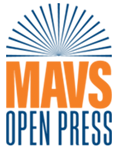62 Chapter 1: Introduction
1.1 Purpose
The purpose of this textbook is to equip graduate students, particularly doctoral students in Colleges of Education, with a strong foundation in applied statistical analysis. While designed with education students in mind, the text is equally relevant to graduate students across the social sciences. Recent research with doctoral students in education concluded that their quantitative methods training was often inconsistent and lacking in applied practice and students view quantitative training as important and worthwhile beyond mere personal interests (Fergerson et al., 2017). Therefore, the textbook addresses the gap between theoretical statistical knowledge and the practical skills required to apply quantitative methods effectively. By integrating conceptual understanding with applied techniques, the book aims to enable students to conduct rigorous quantitative analyses that directly inform their research questions. Ultimately, the goal is to prepare graduate students to approach quantitative data with confidence, apply appropriate methods in their dissertations, and engage with the increasingly data-driven demands of academic and professional practice.
1.2. Applied Focus of the Textbook
While many statistical textbooks emphasize mathematical formulas when introducing statistical tests, this book prioritizes applied understanding. Formulas are included only when necessary to support comprehension, making the materials accessible to readers without a strong mathematical background. This approach is especially beneficial when addressing advanced topics such as factor analysis.
1.3 Outline of the Textbook
The book is organized into two main sections: (1) an introduction with guided practice in performing statistical tests, and (2) the development of a research report aligned with academic guidelines. The first section contains nine chapters covering the major statistical techniques included in the course: Foundations, Factorial ANOVA, Repeated Measures ANOVA, ANCOVA, MANOVA, Multiple Linear Regression, Logistic Regression, Reliability, and Factor Analysis. The second section provides step-by-step guidance on preparing a literature review, presenting research methods, managing and analyzing data, and writing up results.
1.4 References
Ferguson, S. L., Hovey, K. A., & Henson, R. K. (2017). Quantitative preparation in doctoral education programs: A mixed-methods study of doctoral student perspectives on their quantitative training. International Journal of Doctoral Studies, 12, 137-156. Retrieved from http://www.informingscience.org/Publications/3789.

